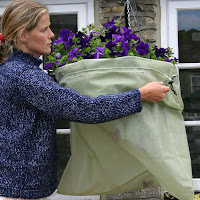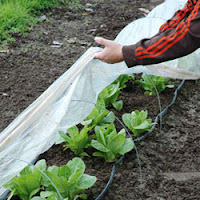Guest Author: Mark Greene

If you are looking to cover individual plants in containers or hanging baskets, Easy Fleece Jackets do the trick. These thick 1.25 oz. polypropylene jackets feature a built in drawstring for easy closure and securing around plants and containers. Jackets are available in three sizes: small 26.5" W x 31.5" H, medium 31.5" W x 39" H, and large 47" W x 70" H.
 Gardeners love using Garden Tunnels to provide a simple way to extend the growing season while protecting plants from frost, wind chill, and garden
pests. These allow you to plant up to two weeks earlier and in tests, this
garden tunnel has been shown to keep growing vegetation up to 25°F warmer than
outside temperatures. Here in Rochester NY, we have used them to grow lettuce into December, even after 12" of snow! Easy
Fleece Tunnels combine wire hoops with row cover material are easy to install
tunnels can even protect tall plants like tomatoes and peppers.
Gardeners love using Garden Tunnels to provide a simple way to extend the growing season while protecting plants from frost, wind chill, and garden
pests. These allow you to plant up to two weeks earlier and in tests, this
garden tunnel has been shown to keep growing vegetation up to 25°F warmer than
outside temperatures. Here in Rochester NY, we have used them to grow lettuce into December, even after 12" of snow! Easy
Fleece Tunnels combine wire hoops with row cover material are easy to install
tunnels can even protect tall plants like tomatoes and peppers.





